mobile View, to the German Version tap the flag
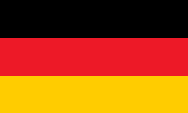

- Duchy of Parma (and Piacenza)
- 1545–1859
- former state on the Italian peninsula
- own name: Ducato di Parma e Piacenza
• Flags
• Meaning/Origin of the Flag
• Coat of Arms
• Meaning/Origin of the Coat of Arms
• Map of the historical states in Italy
• Numbers and Facts
• History
• Origin of the Country's Name
• Map of the today's regions of Italy
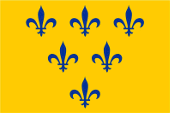
1545–1731,
House of Farnese,
State flag,
Source, by: Wikipedia (D)



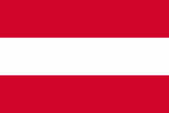
1735–1802,
House of Habsburg/Bourbon-Parma,
State flag,
Source, by: World Statesmen





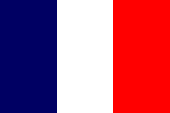
1802–1814,
Parma belongs to France






1815–1848,
House of Habsburg,
State flag,
Source, by: World Statesmen



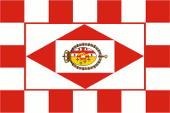
1815–1847,
House of Habsburg,
Merchant flag,
Source, by: World Statesmen



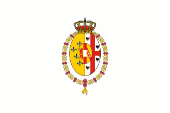
1815–1847,
House of Habsburg,
Flag of the Duke,
Source, by: World Statesmen



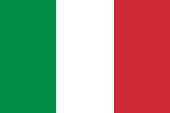
1848,
State flag,
Source, by: World Statesmen





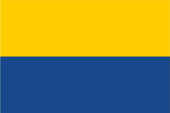
1848–1849,
House of Bourbon-Parma,
State flag,
Source, by: World Statesmen



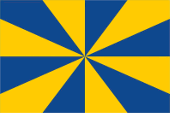
1850–1851,
House of Bourbon-Parma,
State flag,
Source, by: World Statesmen



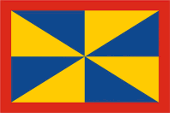
1851–1859,
House of Bourbon-Parma,
State flag,
Source, by: Wikipedia (D)




The flag of the Duchy of Parma showed originally the image of the coat of arms of the Farnese family, six blue lilies on gold. After the end of the reign of the Farnese family , the flags of each ruling dynasties may have been used. In 1815 (Congress of Vienna) , the Duchy of Parma was restored under the Duchess Marie-Louise of Austria, and it is handet over a vertically striped flag in the colors red and white. Maybe the colors go back to the house colors of the Austrian Habsburgs, who used the red-white-red shield of the House of Babenberg. From 1847 reigned again the House of Bourbon, the Bourbon-Parma sideline, and it was introduced a horizontally striped flag in the colors yellow and blue. This could be the house colors of the line Boubon-Parma , or, more likely, a revival of the old colors of Parma, the colors of the Farnese family, which were reproduced from 1850 in an other arrangement, and from 1851 – to the end of the Duchy in 1859 – were additionally surrounded by a red border.
Source: Wikipedia (D),
World Statesmen,
Volker Preuß


Coat of Arms of Parma (House of Farnese),
Source, by: Wikipedia (D)

The coat of arms of the Duchy of Parma was originally the coat of arms of the Farnese family. It showed six blue lilies on gold. This heraldic image then appears again and again in the heraldry of the coat of arms of the Dukes of Parma on, from whatever noble house they came, Habsburg or Bourbon. Even Napoleon's son Francis Joseph Charles Bonaparte used between 1814 and 1817 the title "Prince of Parma", and his coat of arms showed also the six lilies.
Source: Wikipedia (D),
Volker Preuß

all state denominations in English:
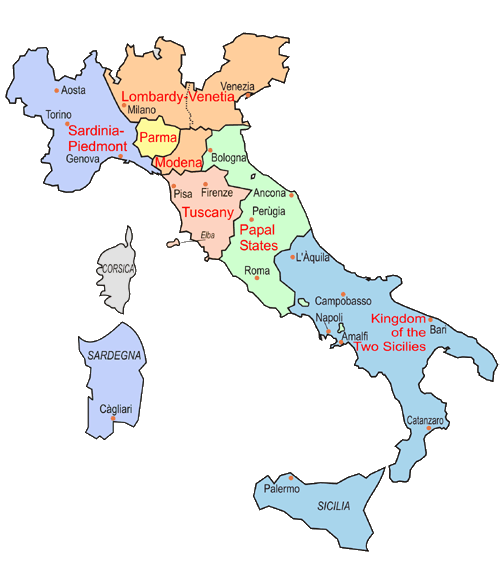
Source: Volker Preuß

Area: 2.378 square miles (ca. 1858)
Inhabitants: 502.250 (ca. 1858)
Density of Population: 211 inh./sq.mi. (ca. 1858)
Capital: Parma
Sprache: Italian
Source: Meyers Konversationslexikon

antiquity · in the today's region of Parma settle Raetians, Umbrians and Celts
since 5th cent. B.C. · immigration of Etruscians from the Alpes
since 225 B.C. · Roman conquest, establishment of the Province of Gallia Cisalpina
89 B.C. · the Province of Gallia Cisalpina gets incorporated into the Province of Italy
452 · Hun's invasions
476 · dismissal of the last Roman emperor Romulus Augustulus, end of the (West)Roman Empire, the today's Lombardy belongs until 493 to the Empire of the Odoaker
489 · conquest of the region by the Eastern Goth
535 · conquest by Byzantium (East Rome)
568/569 · conquest and settlement by the Langobardes (to the Lombardy)
774 · conquest by the Franks
781 · incorporation of the Lombardy into the Frankish Empire of the Carolingians
843 · at the division of the Frankish Empire comes the Lombardy to the Kingdom of Italy
888 · after the vanish of the Carolingians disintegrates the Region into small states
961 · Otto I. brings Parma to the German Kingdom
ca. 1000 · Parma joines the Lombardian Alliance against the German Emperor (Milan, Bergamo, Lecco, Cremona, Mantua and Brescia)
1167 · the Lombardian Alliance takes position against the German Emperor Frederick I. (Barbarossa)
1183 · recognition of the independence of the Lombardian Alliance
ca. 1215–1350 · fights between Ghibellines (emperor's party) and the Guelfes (pope's party)
1277 · Ottone Visconti takes over the power in Milano, later rules the family from Milano the whole Lombardy
1328 · the family Gonzaga takes over the power in Mantua (later Duchy of Mantua, 1708 to the House of Habsburg
1395 · Gian Galeazzo Visconti receives from the German King Wenceslaus of Luxembourg the title of the Duke of Milan
1450 · extinction of the Visconti family, the family Sforza takes over the Duchy of Milan
1499 · France intervenes in Northern Italy, the Duchy of Milan becomes a French estate
1512 · Parma gets separated as an own duchy from the Duchy of Milan
1545 · Parma is awarded by Pope Paul III. as a duchy to his son Pier Luigi Farnese as a fief
1547 · Pier Luigi Farnese is murdered, the fiefdom passed over to Ottavio Farnese, who also receives Piacenza (hence Duchy of Parma and Piacenza)
1731 · extinction of the Farnese family
1731–1735 · Parma comes as Secundogeniture to the House of the Spanish Bourbons
1735 · Vienna Preliminary Peace , the Spanish Bourbons exchange Parma with Emperor Karl VI . against the Kingdom of the Two Sicilies, Parma becoes in this way an Austrian-Habsburg possession
1748 · Peace of Aachen, Maria Theresa, Empress of Austria, cedes Parma, Piacenza and Guastalla (since then to Parma) as Secundogeniture of the the Spanish Bourbons to the Spanish Infante Philip of Parma, with this arises the sideline of Bourbon-Parma
1796 · conquest of northern Italy by French troops, the Duke of Parma has to buy back his title and possessions from Napoléon
1802 · the Duke dies, Napoleon takes over the Duchy and dissolves it
1805 · annexation of the former duchy by the Napoléonic France
1814/15 · Congress of Vienna , restoration of the Duchy of Parma under the Duchess Marie-Louise of Austria, wife of Napoleon, former Empress of France, mother of Napoleon Francis Joseph Charles Bonaparte, Duke of Reichstadt and Prince of Parma
1847 · death of Duchess Marie-Louise of Austria , the House of Bourbon-Parma returns to the throne of Parma
1848 · uprising in Parma, introduction of reforms, close connections to Austria
1848–1849 · in almost all of Italy uprising of the people's movement "Giovine Italia" under Mazzini and Garibaldi, Charles Albert of Sardinia-Piedmont sets himself at the top of the uprising, his troops occupie Parma, but had it to leave after the battle of Novara, the Austrian troops return, the Italian uprising ends in disagreement
27th of March in 1854 · Duke Karl dies because of theconsequences of an assassination, his minor son, Robert, is proclaimed as the Duke, his mother Louise Bourbon is set in as regent
1857 · the Austrian troops leave Parma
1859 · Italian war of independence against Austria , the people of Parma requests the annexation to Sardinia-Piedmont, Louise Bourbon flees on 30th of April to Mantua, but she was called back by the troops of Parma and returnes on 4th of May, after the Battle of Magenta the Austrian troops withdrew and Louise Bourbon goes on 9th of June in exile in Switzerland
18th of March in 1860 · after a referendum annexation of Parma to Sardinia-Piedmont
17th of March in 1861 · coronation of Victor Emmanuel II. of Sardinia-Piedmont to the King of the Kingdom of Italy
1947 · establish of the Emilia-Romagna region as an administrative unit of Italy, it includes the territories of the former states of the Duchy of Parma, the Duchy of Modena and of the the Papal States (Patrimony of Peter)
Source: Meyers Konversationslexikon,
Atlas zur Geschichte,
Wikipedia (D)

The city of Parma was foundet under the Roman Emperor Augustus as "Colonia Julia Augusta Parma". The meaning of the name "Parma" is unclear.
Source: Handbuch der geographischen Namen

all denominations in Italian
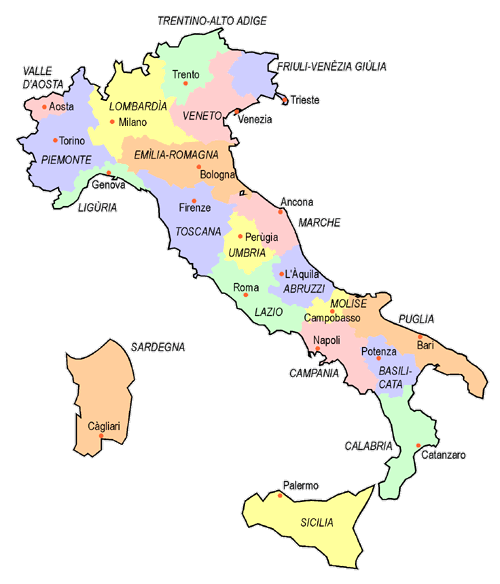
Source: Volker Preuß


![]()





































